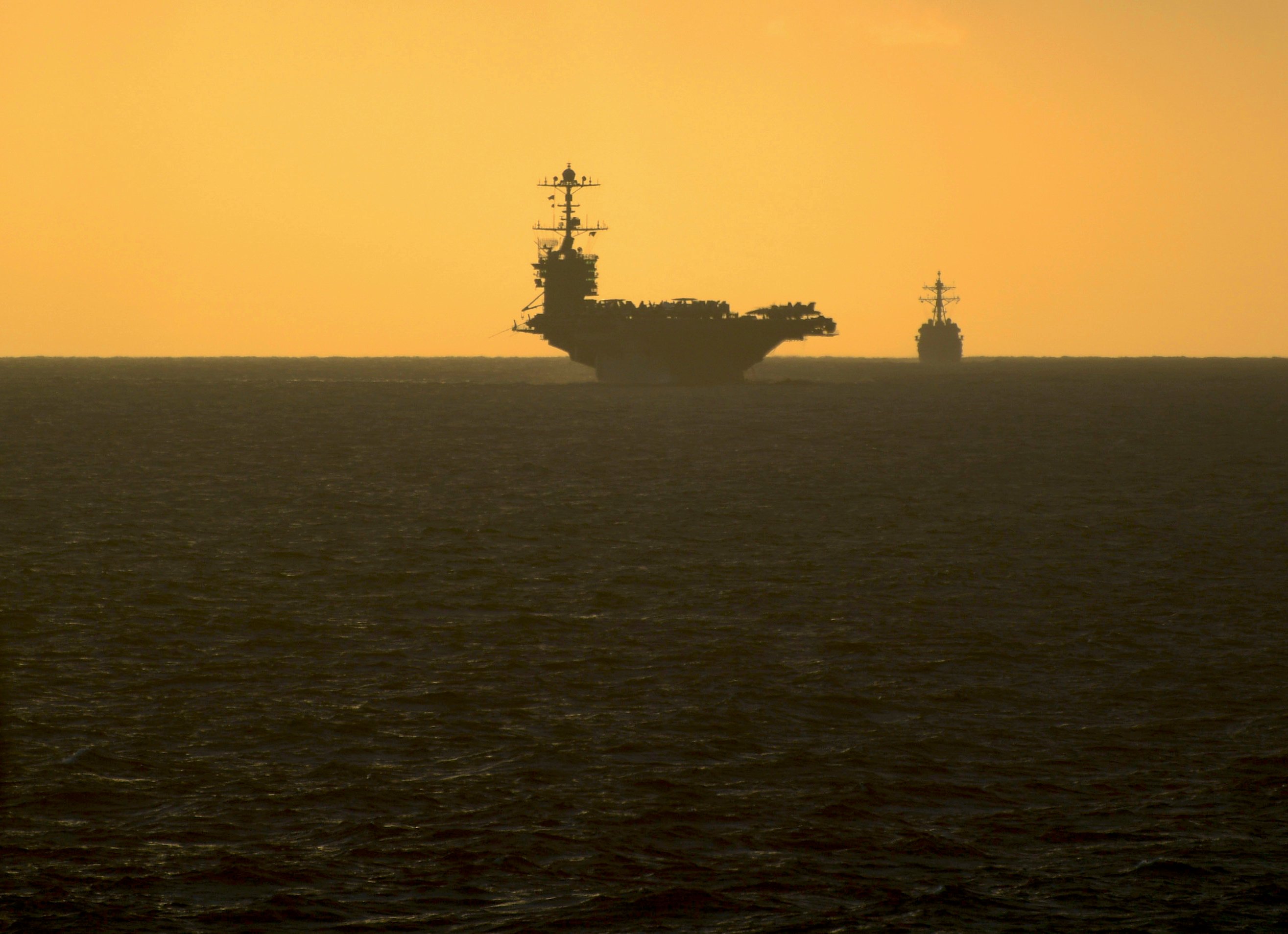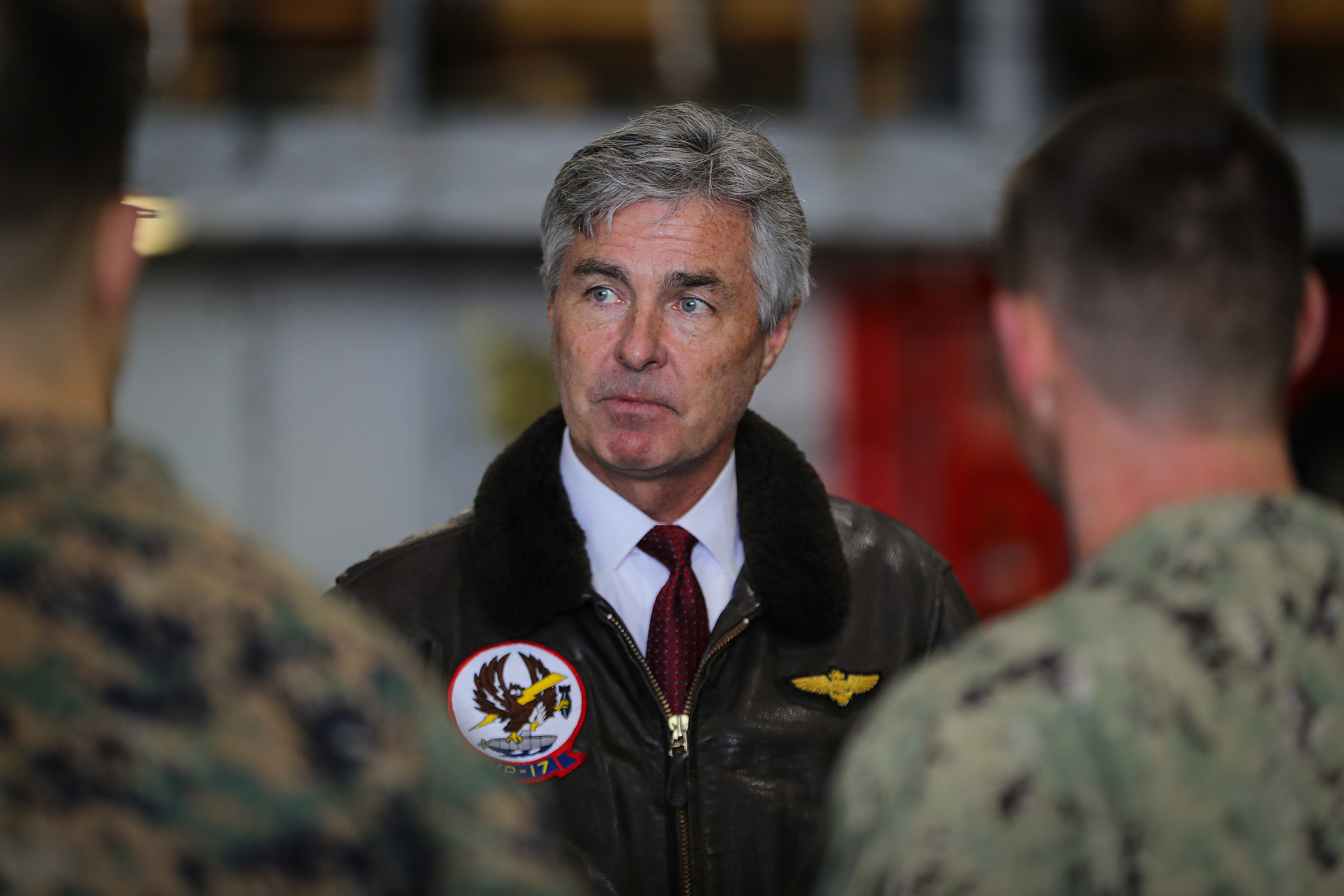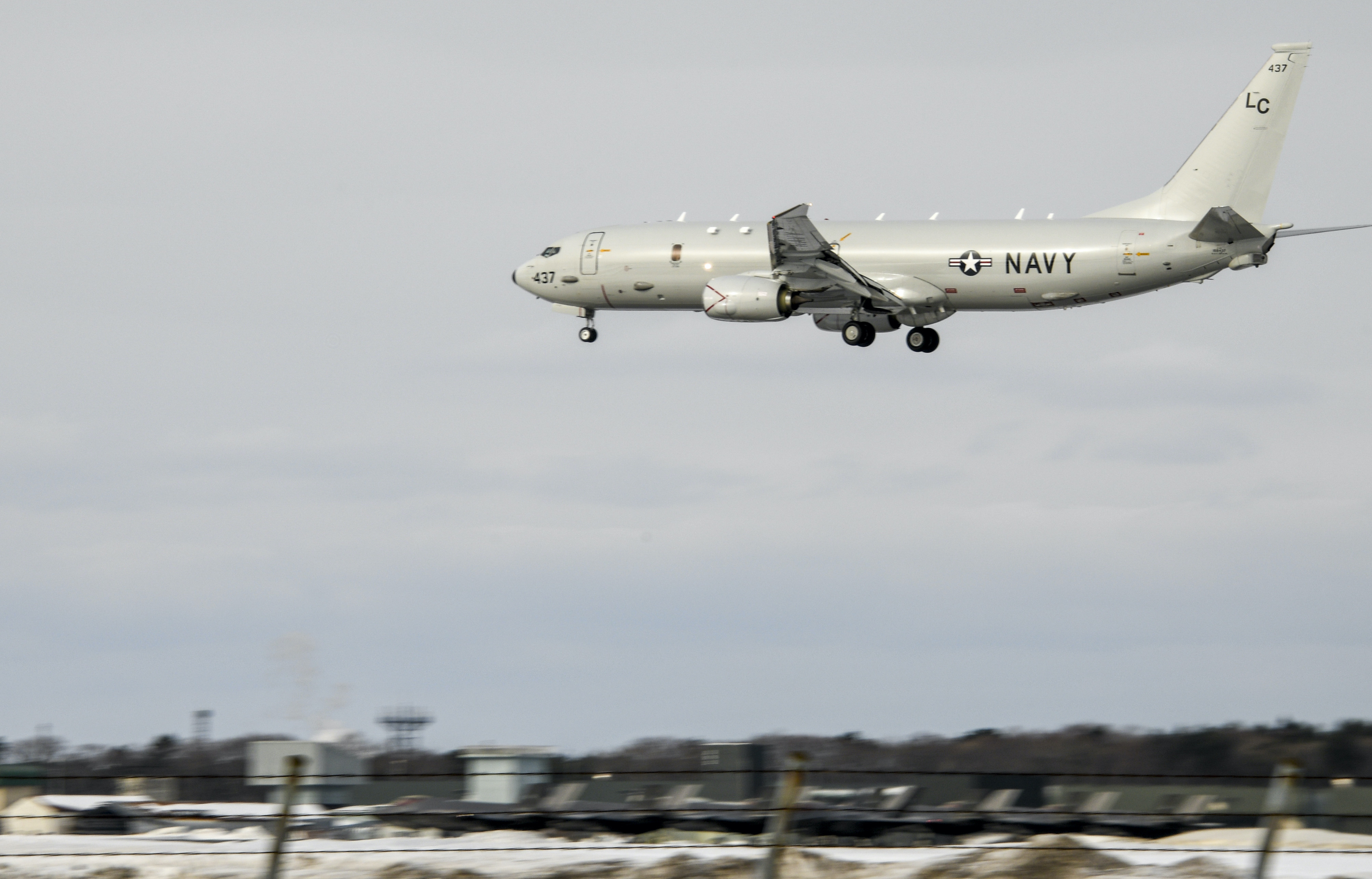
The Navy plans to rename U.S. Fleet Forces Command to the U.S. Atlantic Fleet, harkening back to a time when the Navy was fully focused on maritime operations in the Northern Atlantic rather than the Global War on Terror, the secretary of the Navy told a Senate panel today.
“As the world changes, we must be bold, evolve, and change with it. Instead of perpetuating a structure designed to support yesterday’s Joint Forces Command, we are aligning to today’s threat. To meet the unique maritime challenges of the Atlantic theater, we will rename Fleet Forces Command as the U.S. Atlantic Fleet, and we will refocus our naval forces in this important region on their original mission: controlling the maritime approaches to the United States and to those of our allies,” Secretary Kenneth Braithwaite told the Senate Armed Services readiness subcommittee hearing on Wednesday.
“The Atlantic Fleet will confront the reassertive Russian Navy, which has been deployed closer and closer to our East Coast, with a tailored maritime presence capability and lethality.”
During the hearing, Sen. Tim Kaine (D-Va.), the top Democrat on the subcommittee, reviewed the history of Fleet Forces Command and asked Braithwaite if the move was “to recognize the reality of this increased Russian presence and the fact that great power competition is now sort of the dominant concern of the National Defense Strategy?” Braithwaite confirmed that that was the case.
The Atlantic Fleet existed in Norfolk, Va., for a century, from 1906 until 2006. Though those 100 years brought various iterations of fleet organization, by 2006 LANTFLT remained the naval component commander for U.S. Strategic Command as well as U.S. Northern Command. The Commander, Fleet Forces Command title was tacked on to LANTFLT just after the Sept. 11 attacks in 2001 “to improve alignment and organization structure to ensure the Navy’s fleets, staffs, systems and processes delivered a combat capable Navy ready to respond to all contingencies,” according to a Fleet Forces timeline. In 2006 then-Chief of Naval Operations Adm. Mike Mullen overhauled the organization, doing away with the LANTFLT title and creating U.S. Fleet Forces Command to “serve as the primary advocate for fleet personnel, training, requirements, maintenance and operations issues.”
To this day, Fleet Forces is the chief readiness organization for the fleet, as well as the naval component for NORTHCOM and STRATCOM. USNI News understands that the responsibilities to the two combatant commanders are unlikely to change; however, Fleet Forces’ role in readiness could change if LANTFLT focuses primarily on warfighting. If that were to be the case, though the secretary of the Navy has the authority to change the command’s name to U.S. Atlantic Fleet, there could be some larger structural changes to roles and responsibilities that would require congressional approval.

The move to bring back Atlantic Fleet comes after a 2018 decision to reestablish U.S. 2nd Fleet in Norfolk as a means of focusing more on anti-submarine warfare in the Atlantic and with European allies on the other side of the ocean.
Additionally, Braithwaite also discussed the re-establishment of U.S. 1st Fleet, which he announced last month at the Naval Submarine League annual conference.
SECNAV said today that 1st Fleet would be “an agile, mobile, at-sea command” – compared to U.S. 7th Fleet, which has its headquarters in Japan but can also deploy and operate at sea aboard command ship USS Blue Ridge (LCC-19). 7th Fleet will remain in Japan and cover out towards the international dateline and in towards the South China Sea, whereas 1st Fleet will be more focused on the convergence of the Pacific and Indian Oceans and out towards the border with U.S. 5th Fleet near the Northern Arabian Sea. Though China has more territorial disputes in what will likely remain 7th Fleet, it increasingly relies on the area that will become 1st Fleet to transport goods and expand its influence into the Middle East and Africa.
Braithwaite previously mentioned Singapore as a potential eventual land-based headquarters for 1st Fleet, though it’s unclear if that idea is still being discussed or not.
“This will reassure our allies and partners of our presence and commitment to this region, while ensuring any potential adversary knows we are committed to global presence to ensure rule of law and freedom of the seas,” he said during the hearing.
“We are determined today to make the bold changes required to ensure that our forces are prepared to dominate any potential battlespace and return home safely.”
“We are going to recommission the 1st Fleet, which like the 7th Fleet would operate in the greater Pacific region under the command and control of the United States Pacific Fleet, headquartered in Hawaii. It wouldn’t necessarily take ships from the 7th Fleet or from the 3rd Fleet; it would be a sharing, that’s how our numbered fleets operate, predicated on the demand and the threat that emanates in the part of the ocean in which those respective fleets operate,” he added later in the hearing.
As a result of both changes, 1st, 3rd and 7th Fleets would report up through U.S. Pacific Fleet; 2nd and 4th Fleets would report up through U.S. Atlantic Fleet; U.S. 5th Fleet would continue to report up through U.S. Central Command; and U.S. 6th Fleet would continue to report up through U.S. Naval Forces Europe.
“Secretary Braithwaite is working closely with Acting Secretary of Defense [Christopher]Miller, Congress, [Chairman of the Joint Chiefs of Staff Gen. Mark] Milley, [Chief of Naval Operations Adm. Mike] Gilday, [Commandant of the Marine Corps Gen. David] Berger, and other stakeholders on ensuring the Department of the Navy maintains its maritime dominance in today’s era of Great Power Competition. In order to fulfill this priority, the administrative requirements to change the name from U.S. Fleet Forces Command to U.S. Atlantic Fleet and the recommissioning of the Navy’s 1st Fleet in the INDO-PACOM AOR are in the final stages of coordination,” spokesman Capt. J. Dorsey told USNI News today regarding the LANTFLT and 1st Fleet changes.

Also at the hearing, Braithwaite and Gilday discussed ongoing COVID-19 restrictions and plans to administer the vaccine to the globally spread-out fleet once it’s available.
Gilday said the Navy had two separate but related plans: one on how to distribute the vaccine, and one for how to prioritize which personnel would get the shot first.
On the vaccine itself, Gilday said the Pfizer vaccine requires extra-cold freezers and is only good for about five days once it’s thawed. As a result, the CNO said that vaccine would be going to about 10 continental U.S. sites across the Department of Defense, with all the major CONUS military medical facilities getting the Pfizer vaccine. A handful of DoD medical treatment facilities outside the U.S. would get the Moderna vaccine, which can be refrigerated for about 30 days after it’s thawed and allows for more flexibility in getting it into the arms of troops scattered across the globe.
As for which sailors would get the vaccine first, Gilday said that Navy healthcare workers, as well as emergency and safety personnel on installations, would be at the top of the list. Then would come sailors in strategic forces units such as cyber warfare and ballistic missile submarine crews. The next tier of sailors would be those in units deploying within the next three months.
“We have a good count of what those numbers are, and if there’s anything we’re really good at it’s mass immunization in the U.S. military. And so we feel pretty confident that once we get the vaccine distributed, that the vaccination piece – now that we have the prioritization well thought out – will happen pretty quickly.”
Later in the hearing, Braithwaite and Gilday discussed their recent decision to decommission USS Bonhomme Richard (LHD-6) instead of repairing the ship that burned for five days in July.

“I’m a businessman, Mr. Chairman, and at the end of the day there’s a return on investment,” Braithwaite said.
“And the return on investment of what it would have taken to rebuild that ship – working very closely with the Secretary of Defense, Dr. Esper wanted to see that ship come back, and for all the right reasons, to send the right message, to say we don’t give up our ships very easily – we have a battle flag that hangs in Memorial Hall at the Naval Academy that says ‘Don’t Give Up The Ship’ – but using logic and looking at what it would have required to put that ship back together, it would have been a foolish investment of our American taxpayer dollars to invest in a ship that was over 20 years old instead of looking at the options to build another ship in the future that would have more relative capabilities.”
He said Bonhomme Richard wasn’t going to deploy until 2022, which gives the Navy and Marine Corps time to figure out how to meet operational needs with other resources.
Gilday added, “in terms of near-term impacts operationally, we’ve mitigated those. I think longer-term, let’s say out to three to five years, we’re taking a look at what those other options could be: do we accelerate the production of a big-deck vessel? What would that mean with respect to the amphibious force we’re building for the future? What are the priorities that we want to take a look at within the department? What is the demand signal from the secretary of defense and the combatant commanders for those vessels? And so that’s work to be done that’s ongoing right now.”





